For decades, South Australian firefighters have been exposed to a potentially deadly chemical. Now, their families are worried about the long-term effects on their health and are demanding support.
IT was an awkward gathering.
Ten firefighters, their families, fire service management, union reps. The date was December 10 last year. The location was the Largs North Fire Station. The subject was PFAS. A chemical with a long scientific name that has been linked with a host of deadly diseases and which the firefighters at Largs North had effectively been soaking in for years and years.
There was concern in the air. Fear even. Blood testing had been on offer for some months but there had been no rush among the firefighters to have it carried out. The risk wasn’t well understood at that point.
But as the deadline for testing approached, the firefighters were again encouraged to head to the doctor. And when they did, and the results started to filter back, the level of concern quickly escalated.
The testing covered all Metropolitan Fire Service firefighters, not just the ones stationed at Largs. Until recently, when PFAS was banned, the chemical was an active ingredient in firefighting foam. Thousands and thousands of firefighters have been exposed to it going back to the 1970s.
As the test results started to become known, the firefighters at Largs would talk among themselves. Just to compare numbers. And they started to realise they had a problem. The numbers were astonishingly high. Some were more than 100, about 20 times higher than average, some over 200. In one case the number topped out at more than 600. The measurement is nanograms per millilitre.
The health effects of elevated PFAS readings are not well understood, but there is enough information about the substance’s links to diseases, including cancer, to leave everyone feeling deeply apprehensive. The firies and their families were looking for, if not answers, then at least some comfort the MFS would do all it could to look after its employees. Some now feel abandoned by the MFS, which seems short of solutions and declined to answer a series of questions from SAWeekend about the situation.
All it would say was: “The MFS is not in a position to respond at this time.”
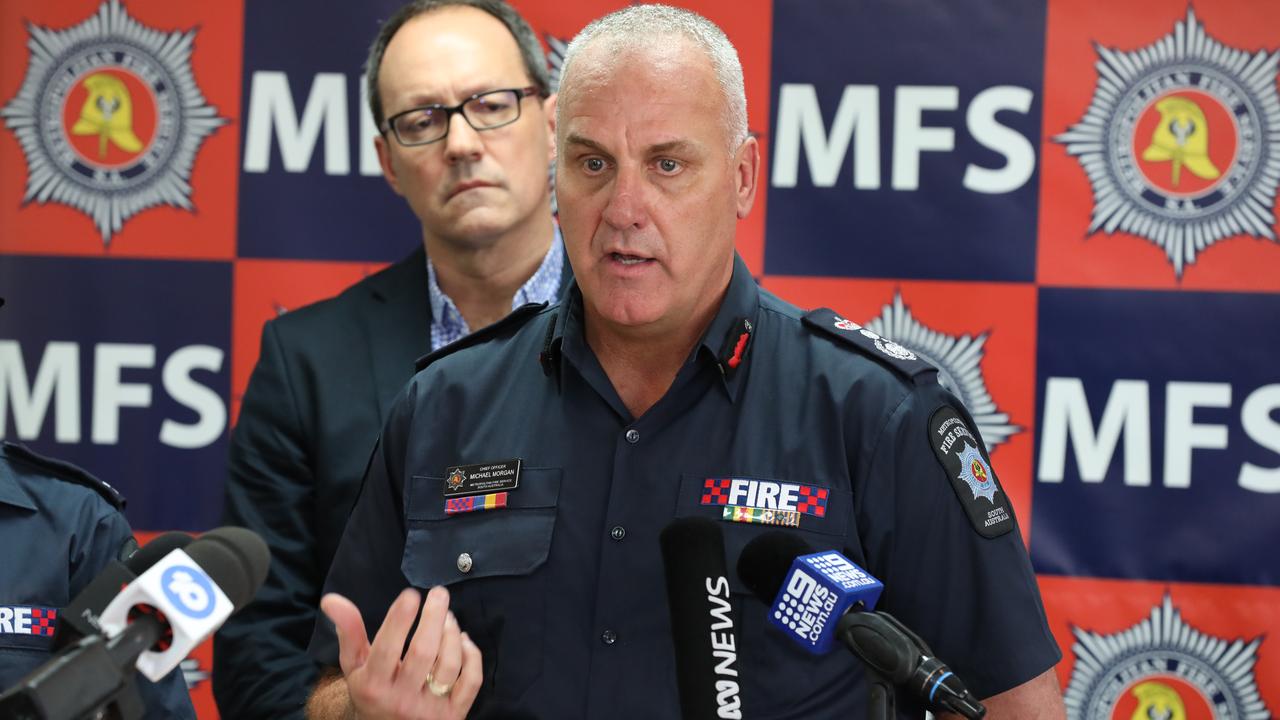
PFAS, short for per-fluoroalkyl and poly-fluoroalkyl substances, is an extraordinary common chemical compound. It has been around since the 1950s and really is everywhere but, for most people, the background reading is thought to be around five. It is also highly persistent, with a half-life in the blood stream of around nine years.
It’s an incredibly useful substance that helps resist heat, stains and grease. PFAS was used in water-resistant jackets and non-stick frying pans such as Teflon. The water repellent Scotchgard is a PFAS. It was used in food packaging, pizza boxes and carpets.
It’s also a key ingredient in firefighting foam when dousing liquid fuel fires.
It is so common a United Nations’ conference held in Geneva in May estimated global clean-up costs could be as much as $US1 trillion. In Australia, the issue of PFAS contamination has been subject to Senate inquiries. Pollution surrounding NSW RAAF bases at Williamtown and Richmond have caused grave concerns for nearby residents.
Not much of that was known among the Largs North firefighters on December 10 last year. But they knew enough to be worried. One participant described the atmosphere of the meeting as “fear”. There had been at least one previous meeting between the Largs firefighters and management but families were also invited to the December 10 meeting.
There was no desire, at least at first, to blame the MFS. It was seen as a situation that was unforeseeable and out of the MFS’s control. The goodwill didn’t last too long.
While, the MFS knocked back a request from SAWeekend to speak to the firies at Largs, some have spoken on the condition of anonymity, while some of the wives agreed to talk.
All are naturally cautious. Worried that by speaking out they could damage the careers of their husbands.
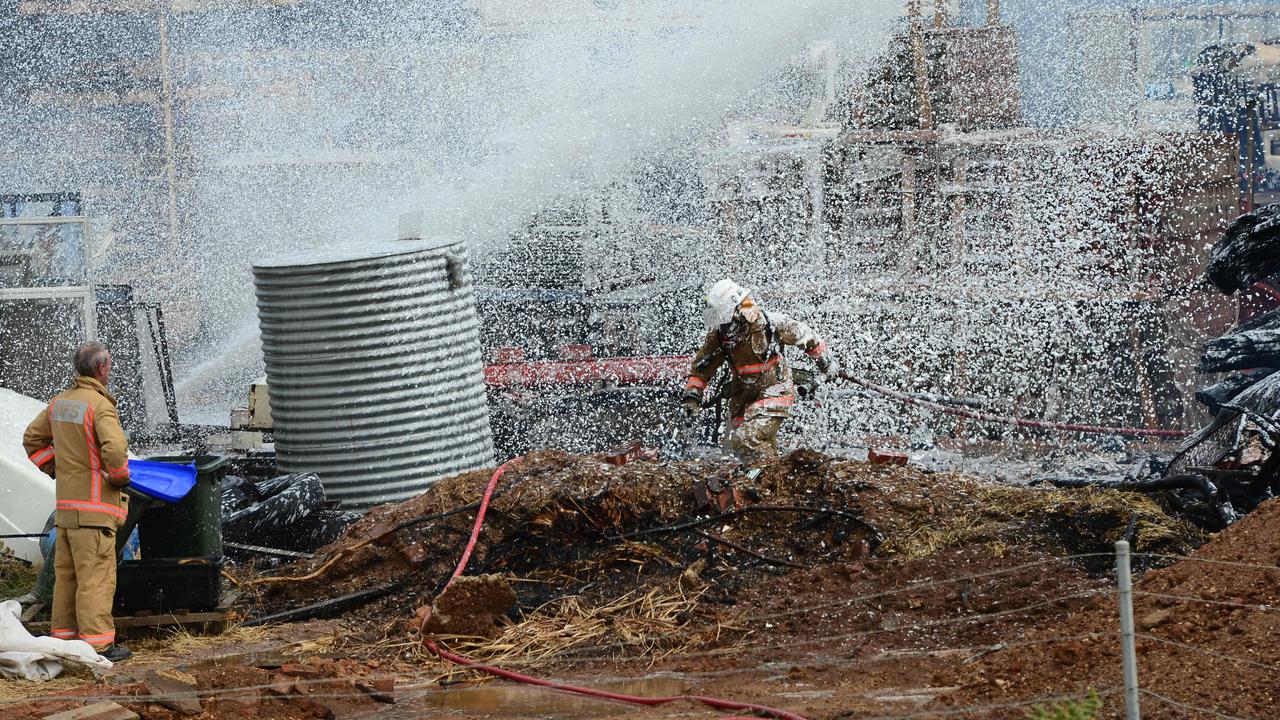
Sarah Chia is a corporate lawyer and married to veteran firefighter Ben Hook.
She was stunned when the MFS tried to blame the firefighters for the PFAS levels in their blood because they had eaten eggs from chickens kept on site and fruit from trees they had grown.
Because of the amount of time firefighters spend at their stations they are encouraged to regard the place as a second home. For a firefighter, a day shift is 10 hours long, while the night shift is 14 hours. It’s not uncommon for firefighters to work them back-to-back and be at work for 24 hours. Hence, firies take pride in the presentation of their station and that’s one of the reason the Largs’ crew planted and tended fruit trees and kept chickens.
“They (the MFS) are trying to cover their backsides,” Chia says. “We weren’t looking to lay blame. We wanted an understanding of what was going to be done to manage our husbands’ health. I’m yet to get any sense that’s a priority for them. I think I’m angry because I am completely powerless to do anything. Nobody gives you answers to anything and you have nowhere to go.”
She says while thousands has been spent cleaning up the station, and the heavily contaminated fireboat MV Gallantry, it seemed like, outside of the initial tests, nothing had been spent on the firefighters.
“Ben has been to the doctor more times in the last six months than he has in the last five years. It’s all at his expense and in his own time,” Chia says.
Sue Rusalen is married to Ian Sulley, another veteran firefighter. Sulley was in charge of the station at Largs until he was recently transferred to Port Pirie. Rusalen says the MFS tried to answer questions but had no answers. The dental practice consultant found the MFS evasive at that meeting as well.
“Do you know what I wanted to hear?” she asks. “I wanted to hear there’s a problem we had no idea was here, we have no idea what caused it, we are incredibly sorry this has happened to anyone and we’ll get to the bottom of it no matter what. That’s all we wanted to hear.”
The impression they were left with was there was “no known” risk to anyone’s health. But that didn’t provide much comfort. Rusalen also wants answers from the Environment Protection Authority, about why they were not more aware of the developing problem.
“I think the fire brigade accidentally uncovered a much greater issue,” she says.
MFS acting chief officer Michael Morgan was at the December 10 meeting, but some of those present said the overriding message the organisation tried to deliver that day was “nothing to see here”.
At an earlier meeting a senior officer chastised a firefighter who had told his wife what reading he had recorded.
And then? Not much. Frustration mainly. The MFS offered psychological counselling, but little else. There were further meetings with the firefighters but the families felt excluded. The stress was felt on the home front. A WhatsApp group was established where people shared information they had found on the internet after Google searches.
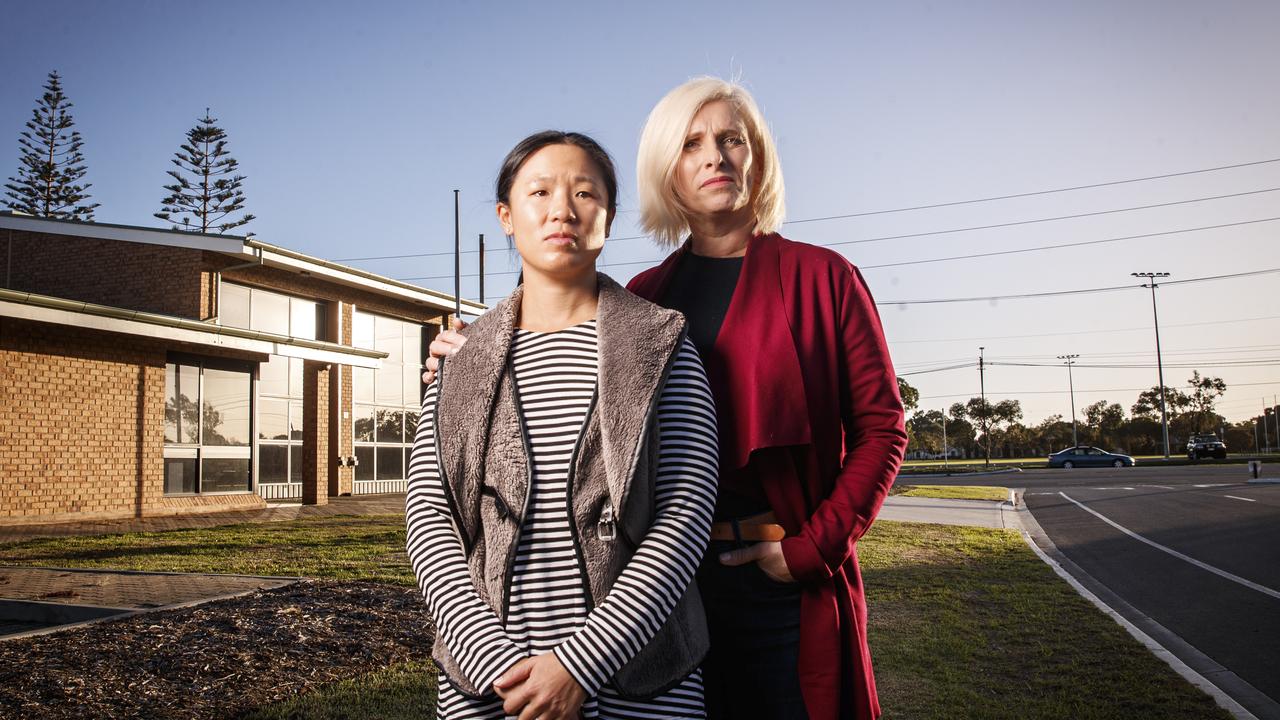
Rusalen also ate some of the eggs and fruit that had been grown at the station. She registered a PFAS reading of 220. Her 21-year-old son registered 46.
“I am sitting at home on my own, you have a level of 220,” Rusalen says. “I can even feel it now. I had this wave go over me and I’m completely on my own and there is no one to ring.”
She even received a letter from a doctor headlined “Dear (insert name here)”.
Test results were delayed by Christmas holidays and because people were on leave. Sarah Chia rang up to hurry up the MFS who had to provide the referral that allowed Hook to go for his blood test. Hook was one of the last ones to be tested and by then it was obvious there was a problem at Largs. She called the MFS and was told there were 10 other referrals to be processed before Hook’s.
The tests covered all MFS firefighters, not just the ones at Largs, but no equivalent problem seems to have surfaced elsewhere. Chia, understandably, didn’t want to wait any longer.
“I am going to wait on the phone until you go through those 10,” she told the person who answered. “Or you can just skip those 10 and go straight to him because there is a cluster at Largs and he’s at Largs.”
Hook would eventually learn he had a reading of more than 200.
There are a multitude of unanswered questions still about Largs. Not the least of which is how it became so contaminated. The MFS had stopped using two PFAS chemicals – PFOS in 2007 and PFOA in 2014. Last year, the South Australian government banned all PFAS-contaminated firefighting foams. In trying to find the answer the MFS initially turned to Mick Tisbury, a straight-talking Victorian who is a commander in the Melbourne Fire Brigade and a vice president of the United Firefighters Union.
Tisbury, through necessity, has also become something of a world authority of PFAS, and recently gave a presentation to a United Nations conference in Geneva on the topic in May.
Tisbury wrote a report for the MFS called PFAS Exposure Pathways Assessment – Largs North Fire Station, which was delivered on February 27.
“The potential exposure pathways from human PFAS contamination are ingestion, inhalation and to a lesser degree skin absorption,” Tisbury wrote. “These potential exposure pathways are significantly increased for firefighters, compared to the average population, due to operational firefighting duties.”
Which means, firefighters come into contact with PFAS more than just about anyone else. And because of the nature of the job they are also frequently exposed to extreme heat. Under those conditions, the pores in the skin open wider and absorption of a chemical such as PFAS occurs at a much more rapid rate.
Tisbury found many ways in which the Largs firefighters could have been exposed to PFAS. He found the soil, groundwater and infrastructure had been contaminated. In addition, the firefighting boat MV Gallantry was heavily polluted.
That “extensive foam drills” had taken place in the rear yard of the station, sometimes with expired foam concentrate that had been donated by industrial users. Foam had also been used to keep dust levels down and to remove oil and grease from the engine bay floor. It was also used as an engine degreaser and hand cleaner.
There were other problems. Dry cleaning of protective equipment was sporadic, breathing apparatus was not worn during drills. After monthly foam testing on the MV Gallantry, hoses were brought back to the station, cleaned and flushed onto garden beds.
But Tisbury concluded it was not only MFS activities that caused the problem.
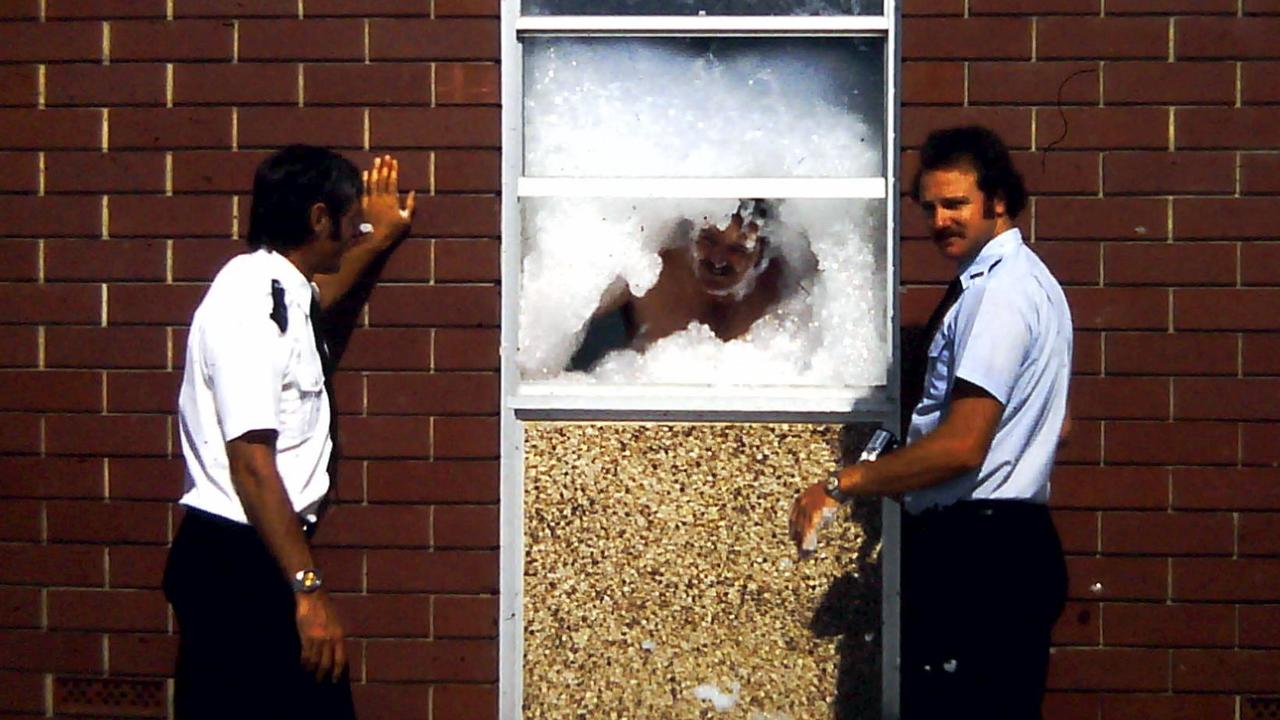
The Largs North station sits on the corner of Victoria Rd and Willochra St. Standing on Willochra St, the backdrop is filled with a massive fuel storage facility owned by the BP joint venture company Atom. You can’t miss the big white tanks holding millions of litres of petrol, diesel and aviation fuel.
Being an area filled with highly flammable liquid, it’s also been well soaked in firefighting foam for decades. In one incident alone in 2011, a fire at the depot required 55 firefighters and 12 fire trucks to quell. One of the issues highlighted by Tisbury in his report was: “Reported gradual and unexplained loss of 1000s of litres of AFFF foam concentrate directly into the ground and water table, from a major hazard facility.”
A spokesperson for BP told SAWeekend that “there is no evidence that indicates BP’s terminal operations have caused or contributed to the reported contamination”. Still, in his finding, Tisbury cast doubts on whether the fire station could ever be cleaned up. “The prospects of PFAS contamination remain high. It is recommended that SAFMS strongly considers permanently decommissioning Largs North Fire Station,” he wrote.
Tisbury has been perplexed by the reaction of the MFS since he filed his report.
“After I gave the report to them, they basically dropped me like a hot potato,” he said. Tisbury acknowledges his recommendation to shut Largs is a “big call” but says it’s one he only made because of his concerns over the “health of the firefighters”.
And the MFS wants to send the firefighters backs to Largs. According to Max Adlam, the secretary of the United Firefighters Union, the MFS never wanted them to leave the station in the first place. That the only reason the station was abandoned was because the firefighters essentially walked out.
“The guys down there actually made the decision and I rang the chief (Michael Morgan) to tell him. He was furious,” Adlam says. Her concern is the MFS is more worried about the prospects of future litigation than the health of its firefighters. Not to mention the costs involved. With Largs closed, the MFS, already on a tight budget, is paying SA Police to use its facility at Fort Largs as a base. But shift changes are still happening at the Largs North fire station.
After the Tisbury report, the MFS commissioned another report on Largs North. This one by engineering consultants GHD. GHD also found there had been a great deal of PFAS contamination on the site, but differed in believing the remediation and cleaning work commissioned by the MFS meant “the potential exposure pathways … are now assessed to be not complete, meaning the staff working at the Largs North Fire Station are no longer exposed to PFAS”.
It was a finding leapt on by the MFS. In the April edition of its PFAS Newsletter under the heading “Largs North Station – the way forward”, the MFS says: “Once the rear yard has been remediated … and the station has had a final clean, it is the MFS intention, in consultation with the UFU, to return firefighters to the Largs North Fire Station.” There was no mention of Mick Tisbury’s report in the April newsletter.
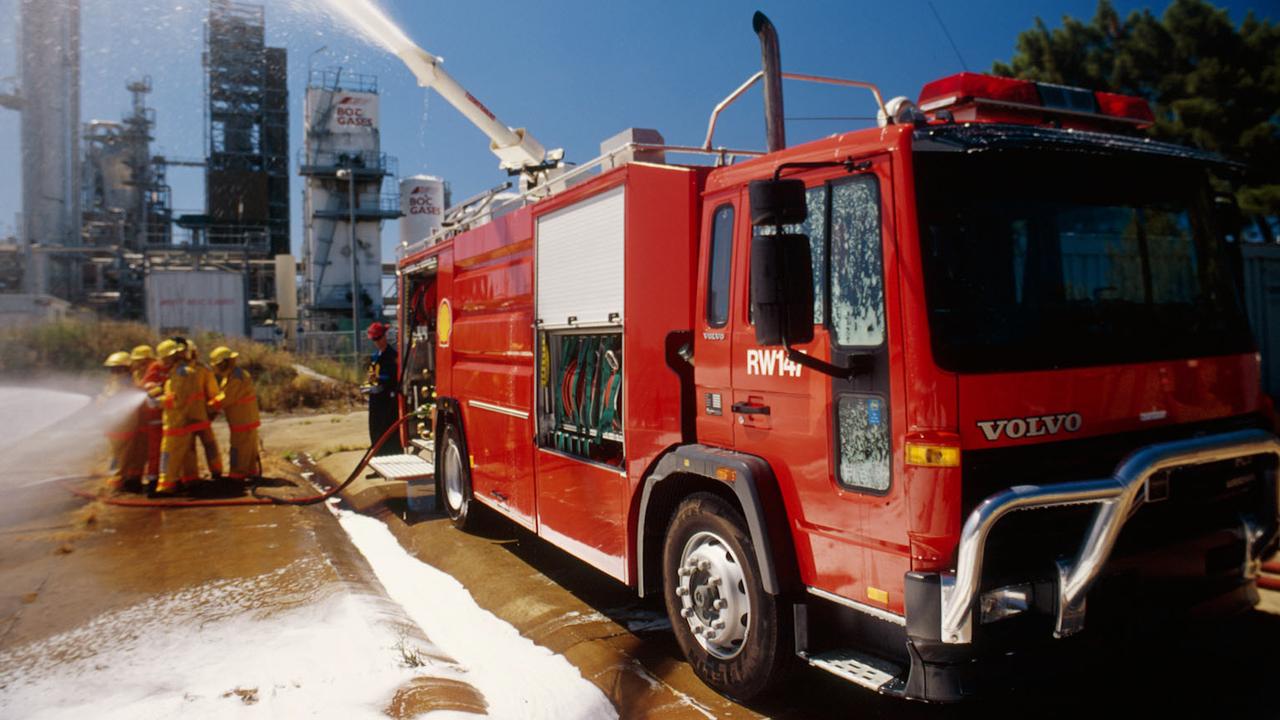
Emergency Services Minister Corey Wingard declined to answer whether the government supported a return to the station, giving a generic statement that “the remediation of appliances and facilities shows how serious we are about protecting the safety of our firefighters”.
But the GHD report raises other issues as well. Across the street from the station are residential homes. They extend all along Willochra St and further into the suburb of Largs North and to the Port River. Look the other way across Victoria Rd and you will see the North Haven Football Club.
According to the GHD report, within a 2km radius of the fire station there are 1237 registered bores. Of these, 506 are domestic bores. The report also mentions 600 wells and “this water is used extensively for garden watering”. GHD found PFAS in the groundwater but also believed it was originating at “other offsite sources”, therefore not just coming from the fire station itself.
The Environmental Protection Authority says it has not done any testing of its own at the station as it’s the MFS’s responsibility. Neither has it been in contact with local residents, although a meeting is scheduled with the Port Adelaide Residents’ Environment Protection Group within the month. An EPA spokesperson said any residents worried should have their bore tested but “there is no evidence to suggest that homegrown produce from properties surrounding the Largs North fire station is affected by contaminated bore water”.
It also doesn’t believe the adjacent fuel dump is part of the problem. Clearly, though, PFAS is polluting vast portions of the Le Fevre Peninsula. An EPA report in 2017 found large quantities of PFAS in dolphins in the Port River.
If it seems all this talk about PFAS is recent, then its history is long. The chemical was developed in the 1930s and started mass production in the 1950s and was one of those accidental scientific breakthroughs. The story goes that Patsy Sherman, a chemist at the US industrial company 3M, was experimenting with a rubber that didn’t deteriorate with exposure to jet fuel when she spilled some of the mixture onto the shoes of her assistant. The shoes couldn’t be cleaned with either water or alcohol, and the stain- resistant product Scotchgard was born.
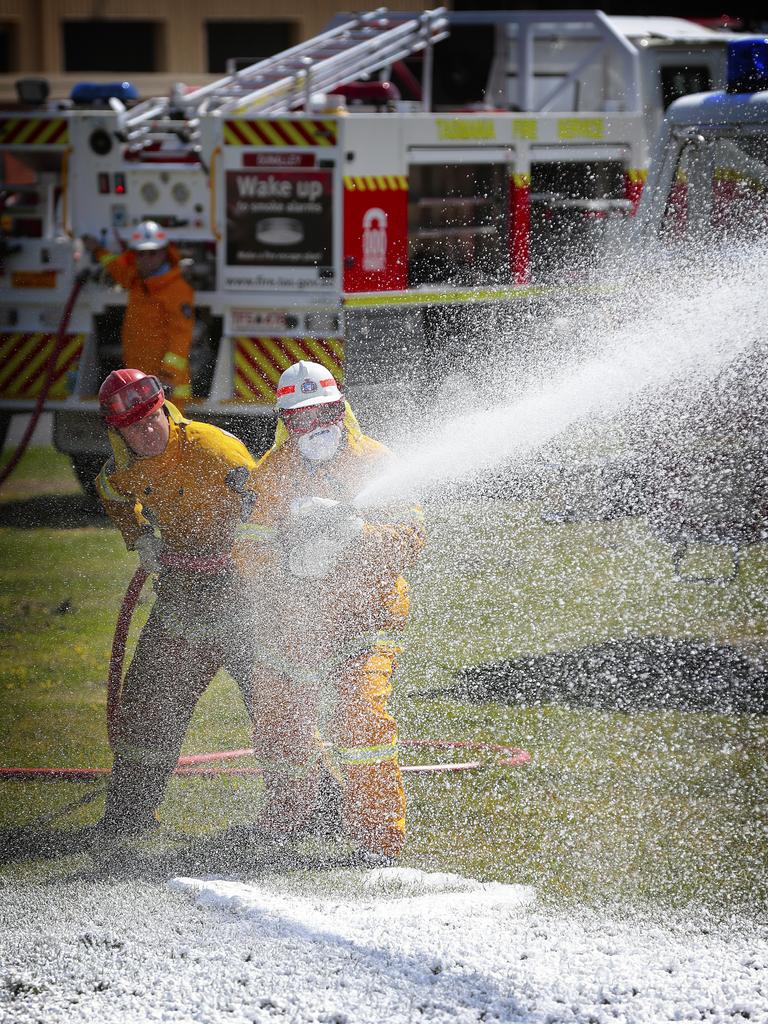
There are 5000 varieties of the chemical and, according to one US study, 99 per cent of Americans will have some form of PFAS in their system. The attraction of the PFAS family of chemicals is that they are extremely stable. They have been referred to as the “forever chemicals” and are a combination of fluorine and carbon. But there is a growing body of evidence that they could also be dangerous to human health.
In the US, chemical company DuPont paid $US671 million to people in Ohio and West Virginia after a variant called PFOA, also known as C8, was found in the drinking water. After that court case was settled a scientific panel was formed and conducted a seven-year investigation and concluded there was a “probable” link between PFAS and a host of potentially deadly diseases
The C8 Science Panel reviewed data collected from 69,000 people over seven years. It listed six serious diseases that could be linked to PFAS. Kidney cancer, testicular cancer, ulcerative colitis, thyroid disease, pre-eclampsia/pregnancy induced hypertension and medically diagnosed high cholesterol. Other reports have also linked PFAS to low birth weights in newborns as well.
But strangely those findings appeared to be ignored, or at best played down by an Australian medical panel which looked into PFAS risks last year. The Expert Panel concluded there is “no current evidence that suggests an increase in overall cancer risk”.
In releasing the report, Commonwealth chief medical officer Professor Brendan Murphy said the panel concluded “there is limited or no evidence of human disease accompanying these associations and many of them are not considered to be clinically significant and require further research”.
Robert Billott is a partner in US law firm Taft Stettinius & Hollister and has led class actions on behalf of people exposed to PFAS, including that large payout and study of people in Ohio and West Virginia. Billott told SAWeekend the panel’s findings are wrong.
“Any representation to the public or the firefighting community that there is no evidence that any PFAS exposure is linked to human disease or supports any screening program for exposed individuals is simply false,” Billott says. “Such statements are inherently inconsistent with the existing scientific data and misleading.”
Billott has launched another class action in the US. This one on behalf of an Ohio firefighter called Kevin Hardwick and is suing chemical companies 3M, Dyneon, DuPont and Chemours, plus a few others. The lawsuit accuses the companies of using Hardwick and others as “part of a massive, undisclosed, human health experiment” without their knowledge or permission.
Hardwick was a firefighter for more than 40 years but the claim is also being brought on behalf of any US resident who has a detectable level of PFAS in their bloodstream. The point of the lawsuit is not money. Billott wants to see a new scientific study established, to build on the work of the C8 Science Panel, that would provide binding answers to any damage caused by PFAS that manufacturers would have to abide by.
But all those answers are years away. Which is not much help to the worried firefighters and their families at Largs North. They know they have been heavily exposed to a potentially deadly chemical. That can play with the mind. Any time a firefighter feels ill or has an unusual lump, the paranoia fires up. A couple of the crew at Largs North have been hit by cancer in recent years, but whether it was caused by PFAS is impossible to know.
Mick Tisbury says he will continue the fight. He talks of the history of nicotine and asbestos. Substances aid to be safe, right up until the moment they weren’t. He doesn’t want to see PFAS turn out the same way and says the “precautionary principle” must be applied to safeguard the Largs North firefighters.
“We are exposed to thousands of toxic chemicals every fire we go into. It’s unavoidable, there is nothing we can do about it, but this is avoidable. So why on earth would you turn a blind eye to something that is avoidable when there is something you can do about it, all because of a couple of quid?”

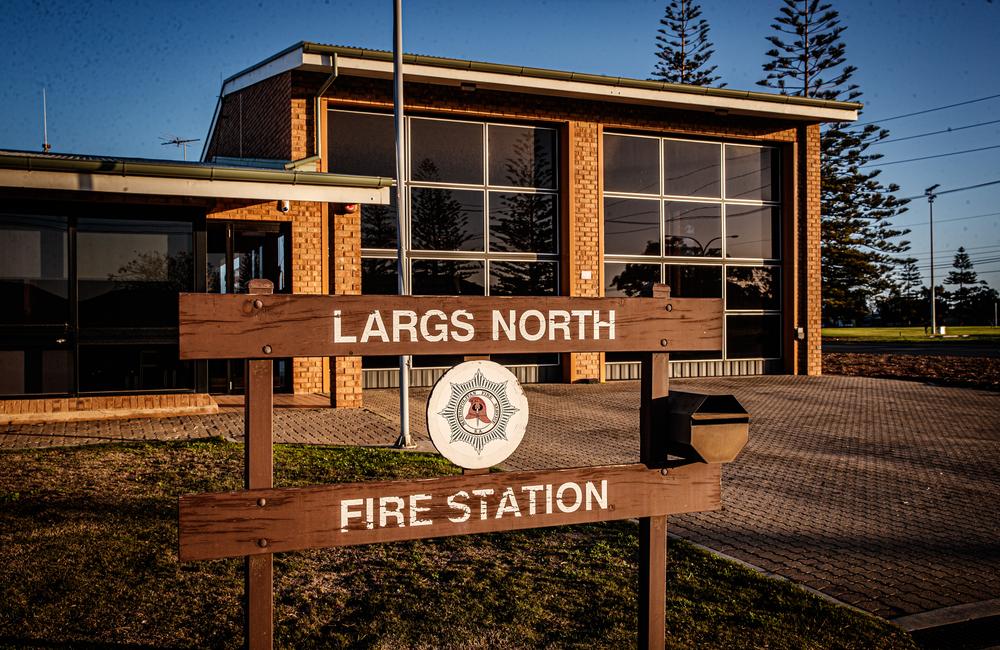


Add your comment to this story
To join the conversation, please log in. Don't have an account? Register
Join the conversation, you are commenting as Logout
Adelaide’s pioneering bid to end homelessness in the CBD
A new move to learn the names and stories of the homeless is driving a bid to cut Adelaide’s rough sleeper numbers to effectively zero. Roy Eccleston reports.
From YouTube to big screen: Adelaide’s car prankster’s directorial debut
They are the Adelaide brothers who became billion-view YouTube stars after an underwater car stunt gone wrong. Now the RackaRacka duo's debut feature film is about to hit the big screen at a gala event. Read their incredible back-story.